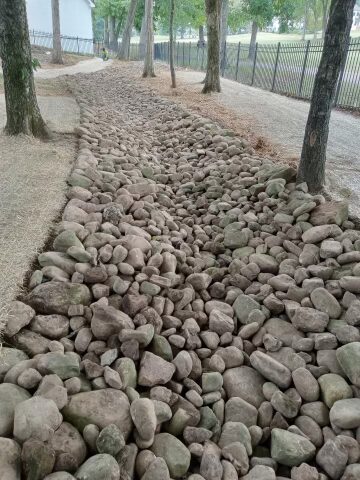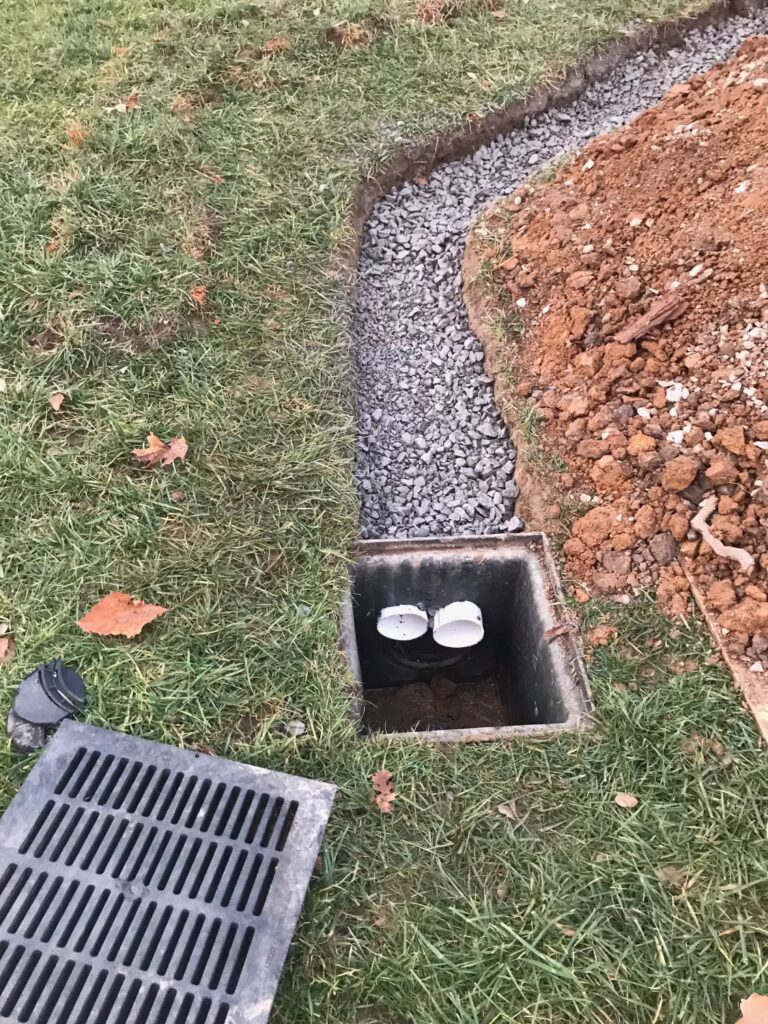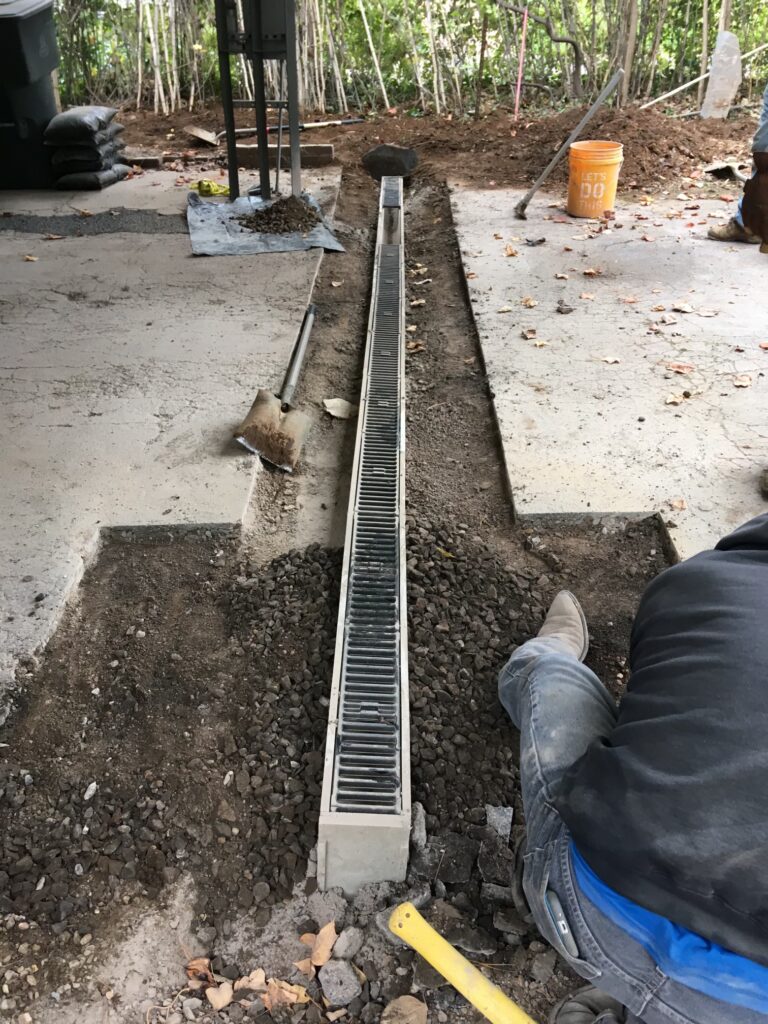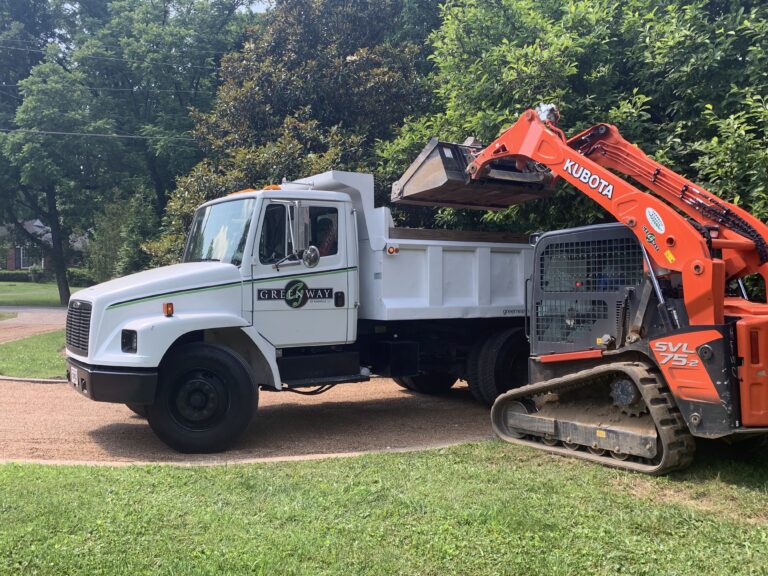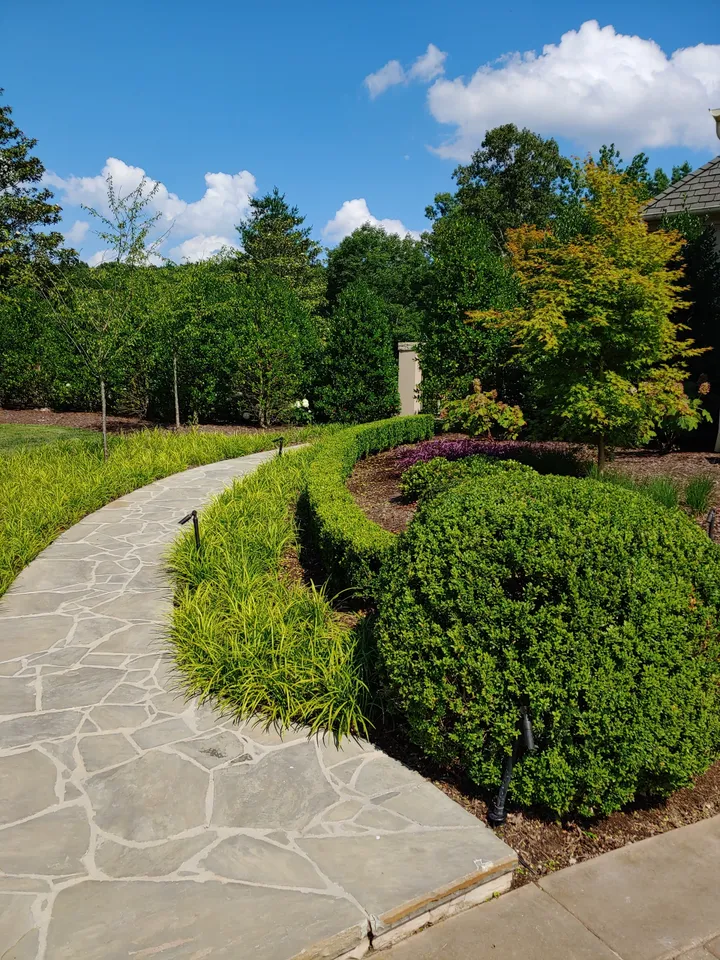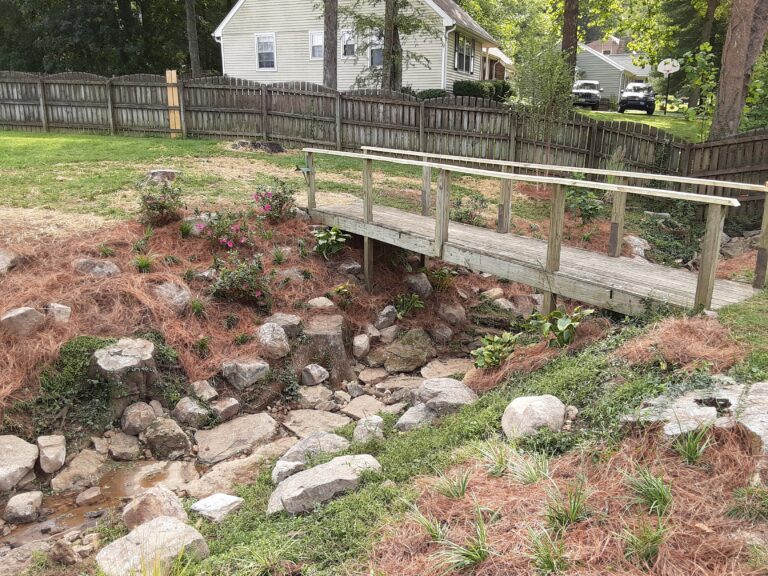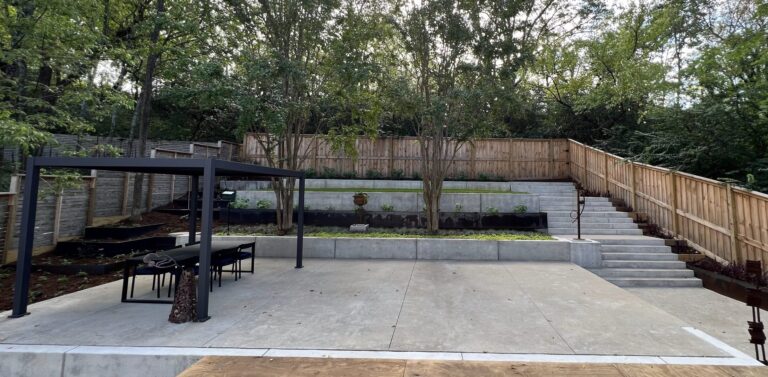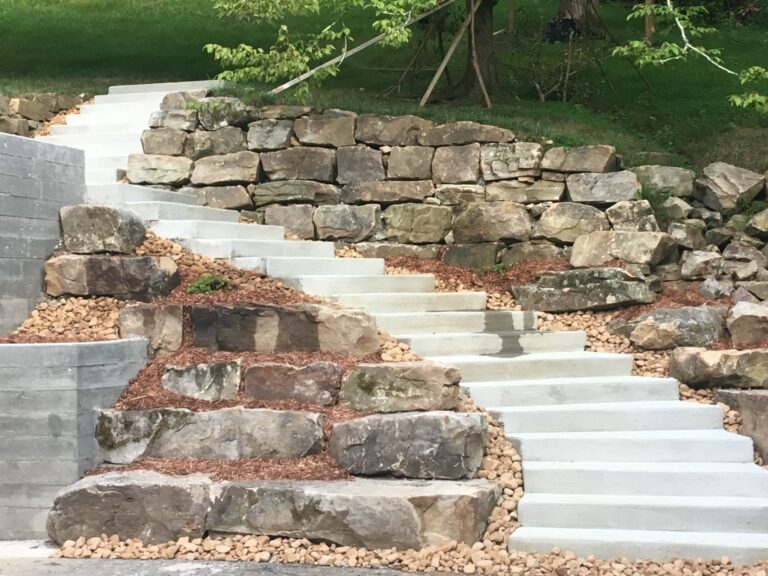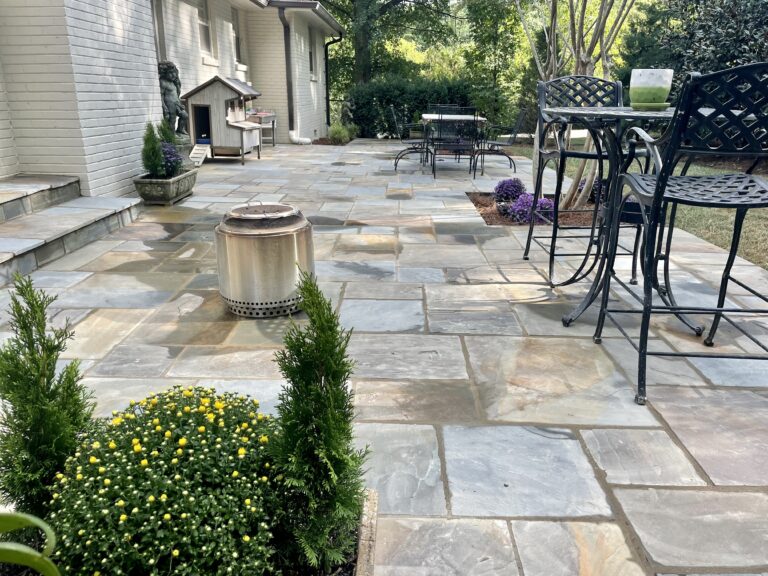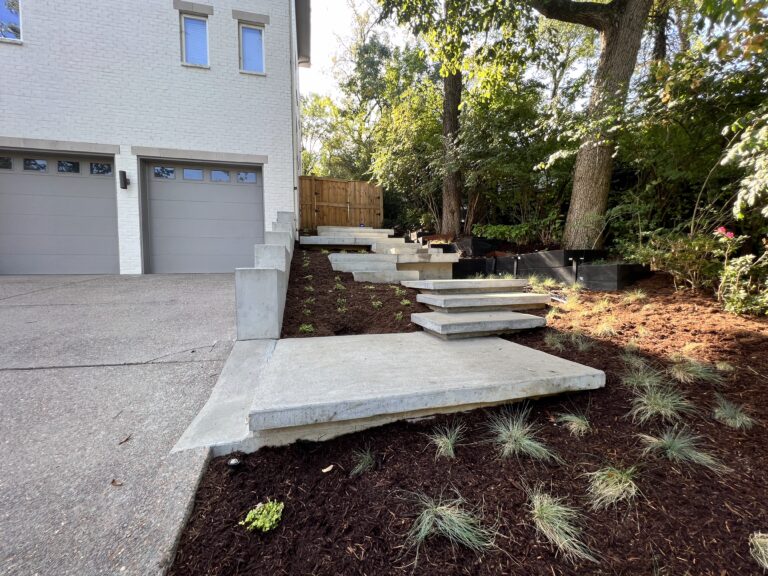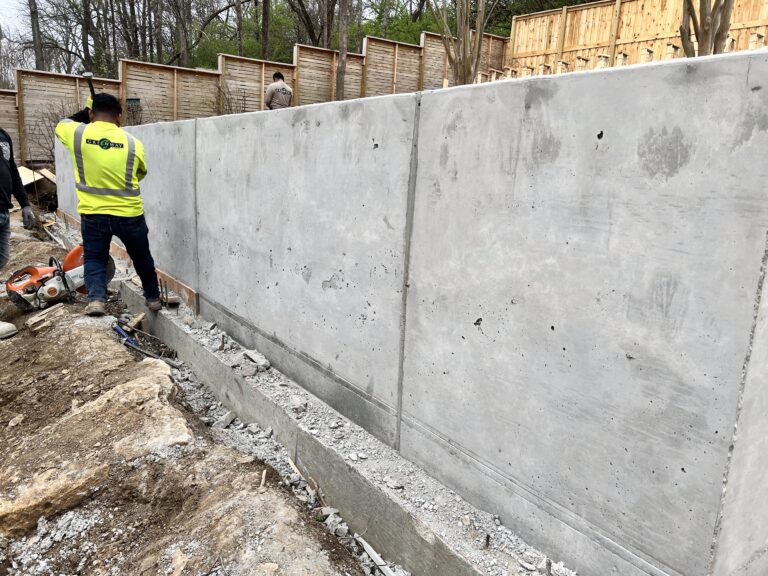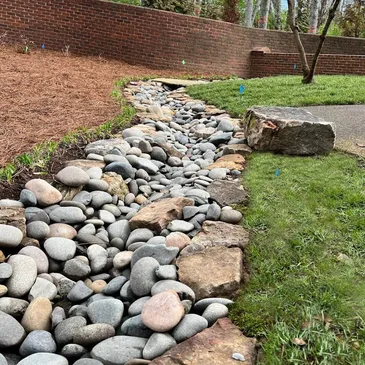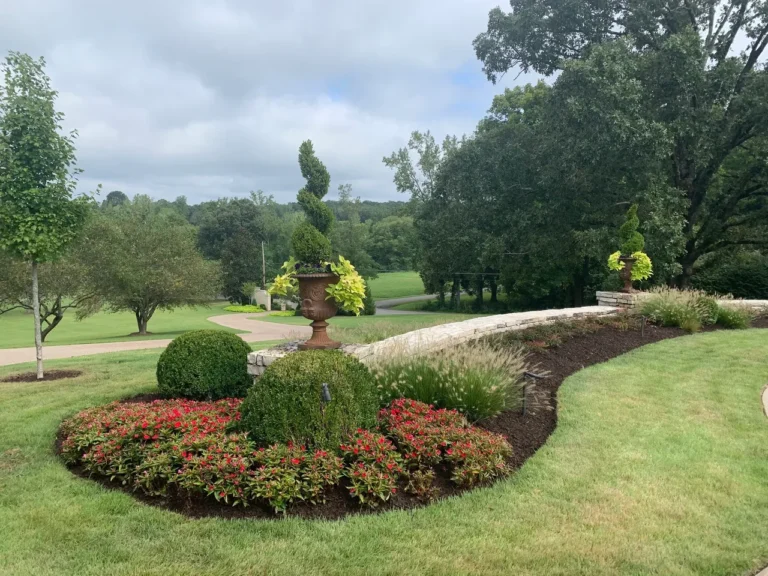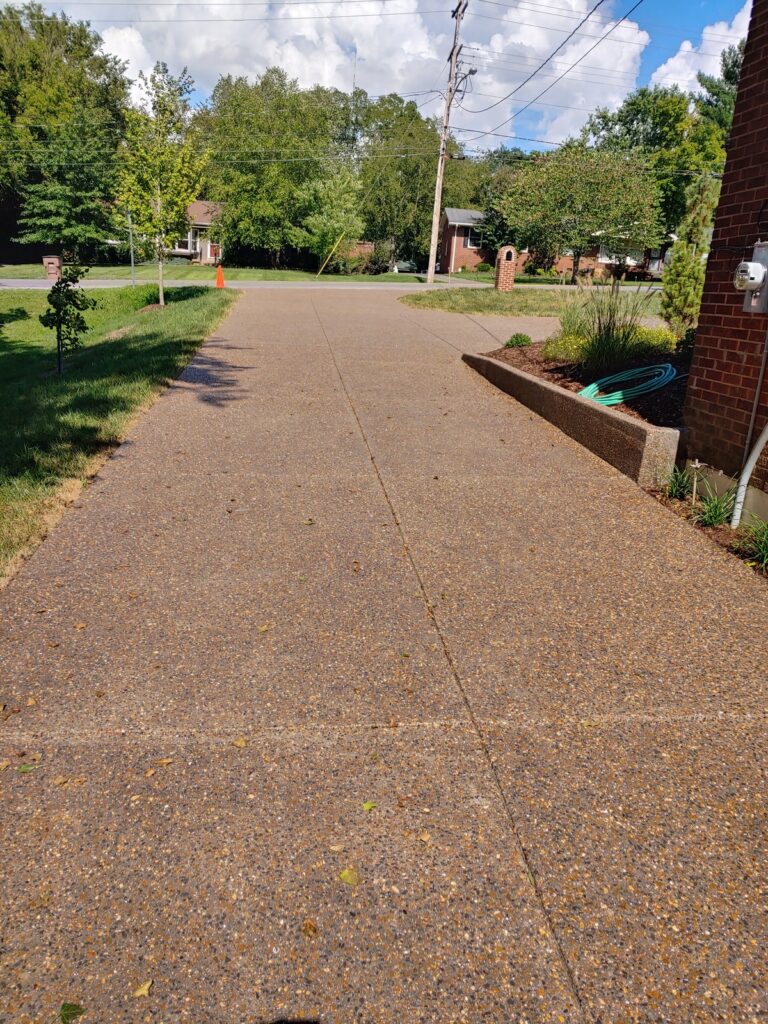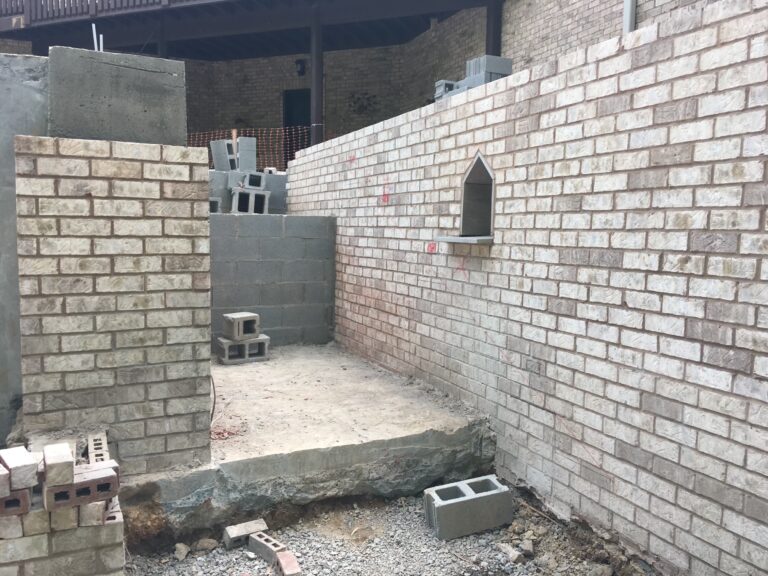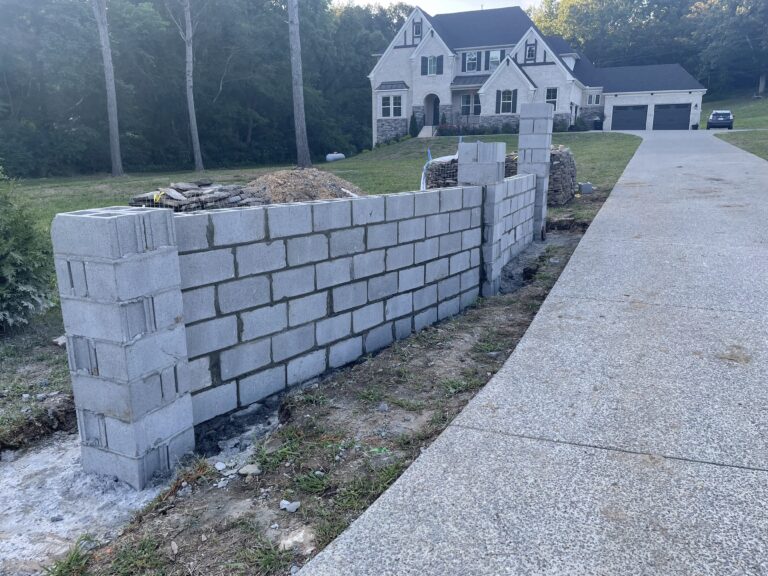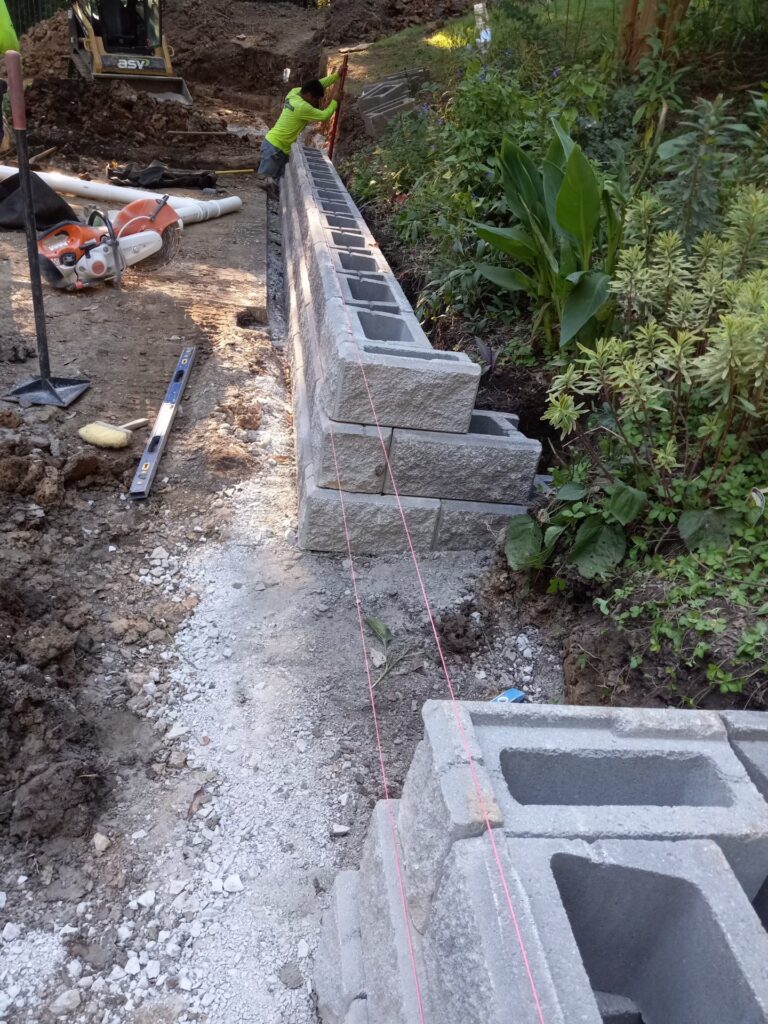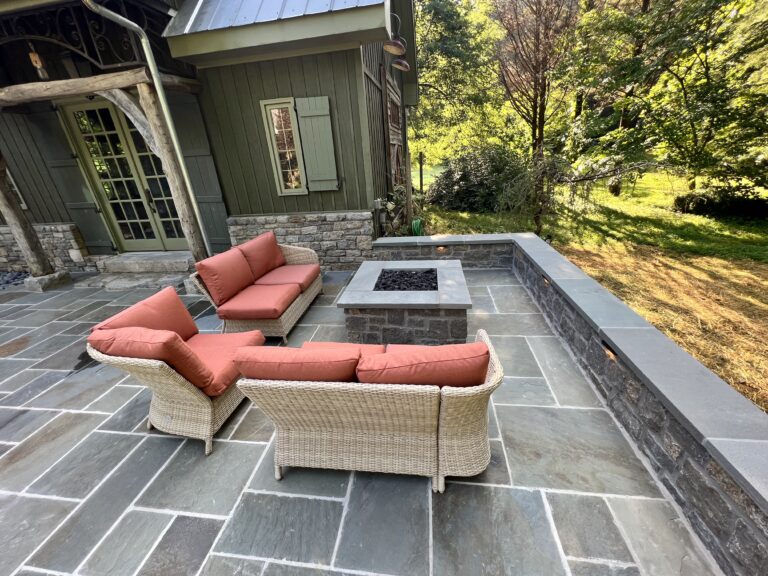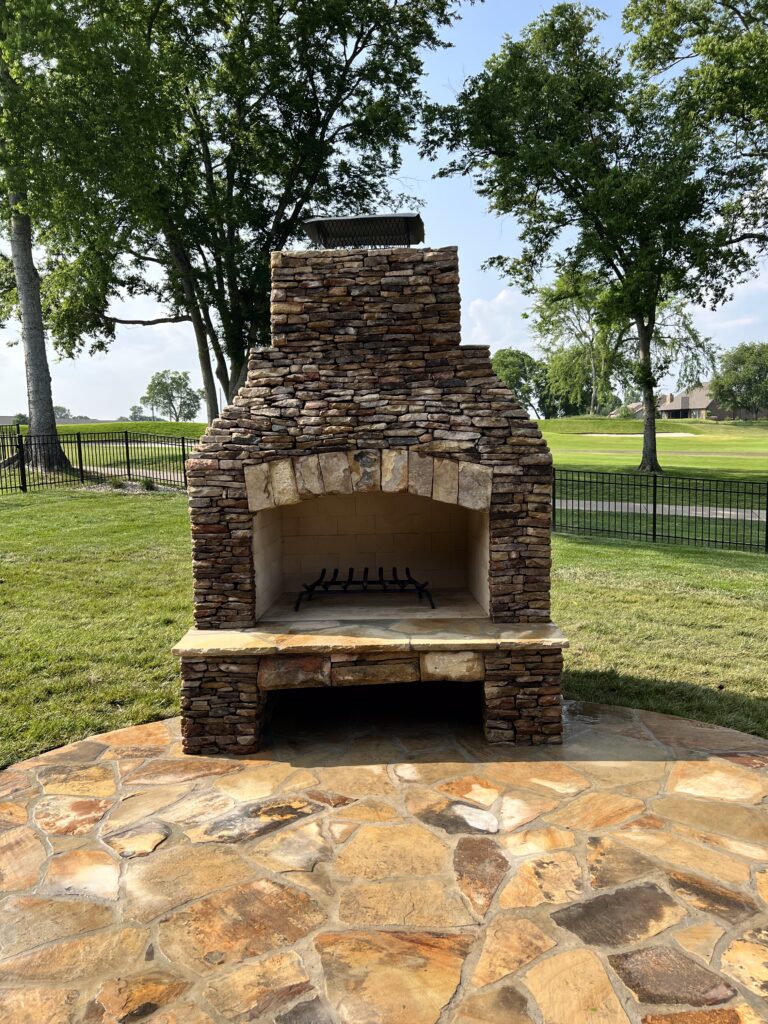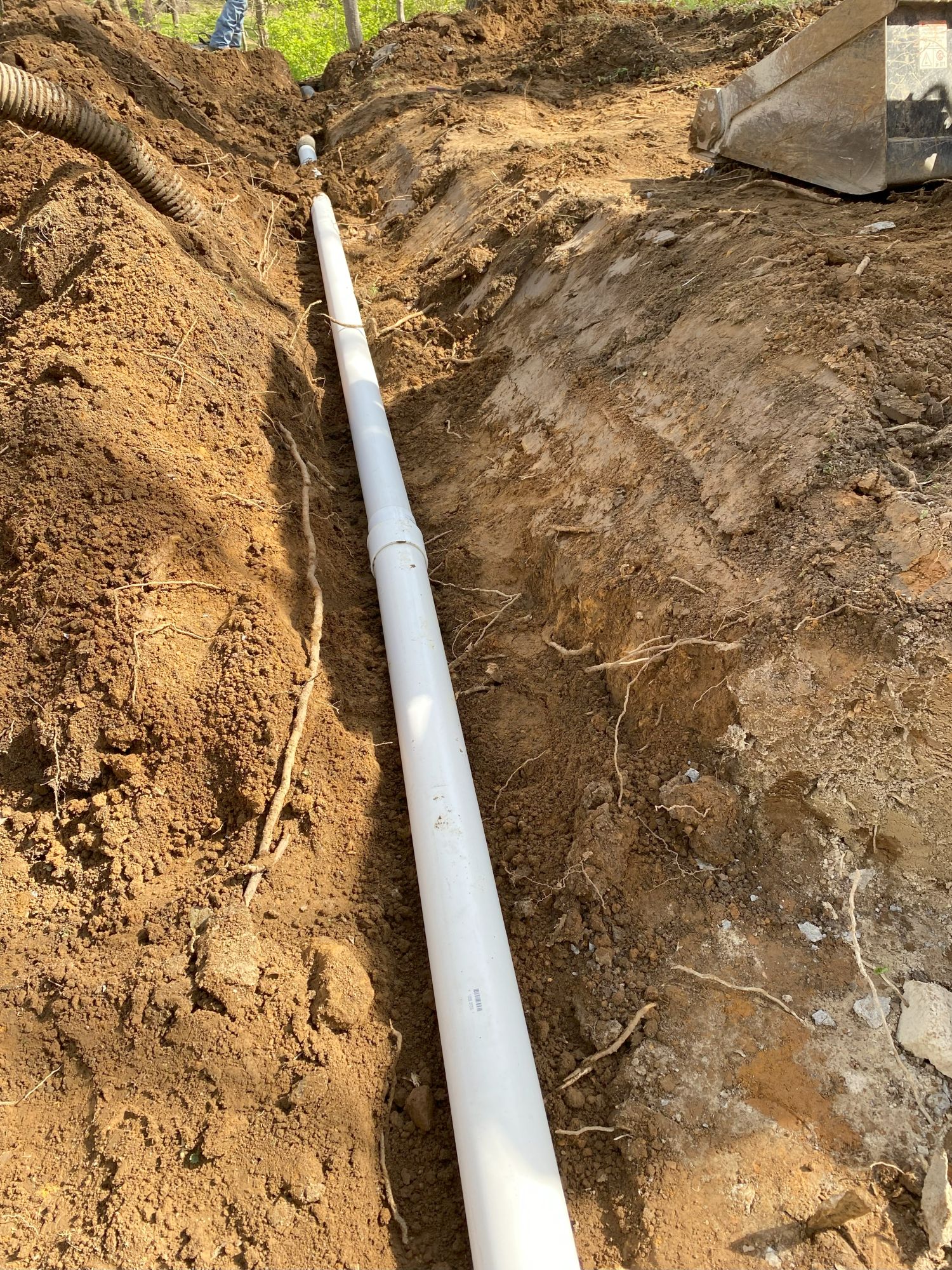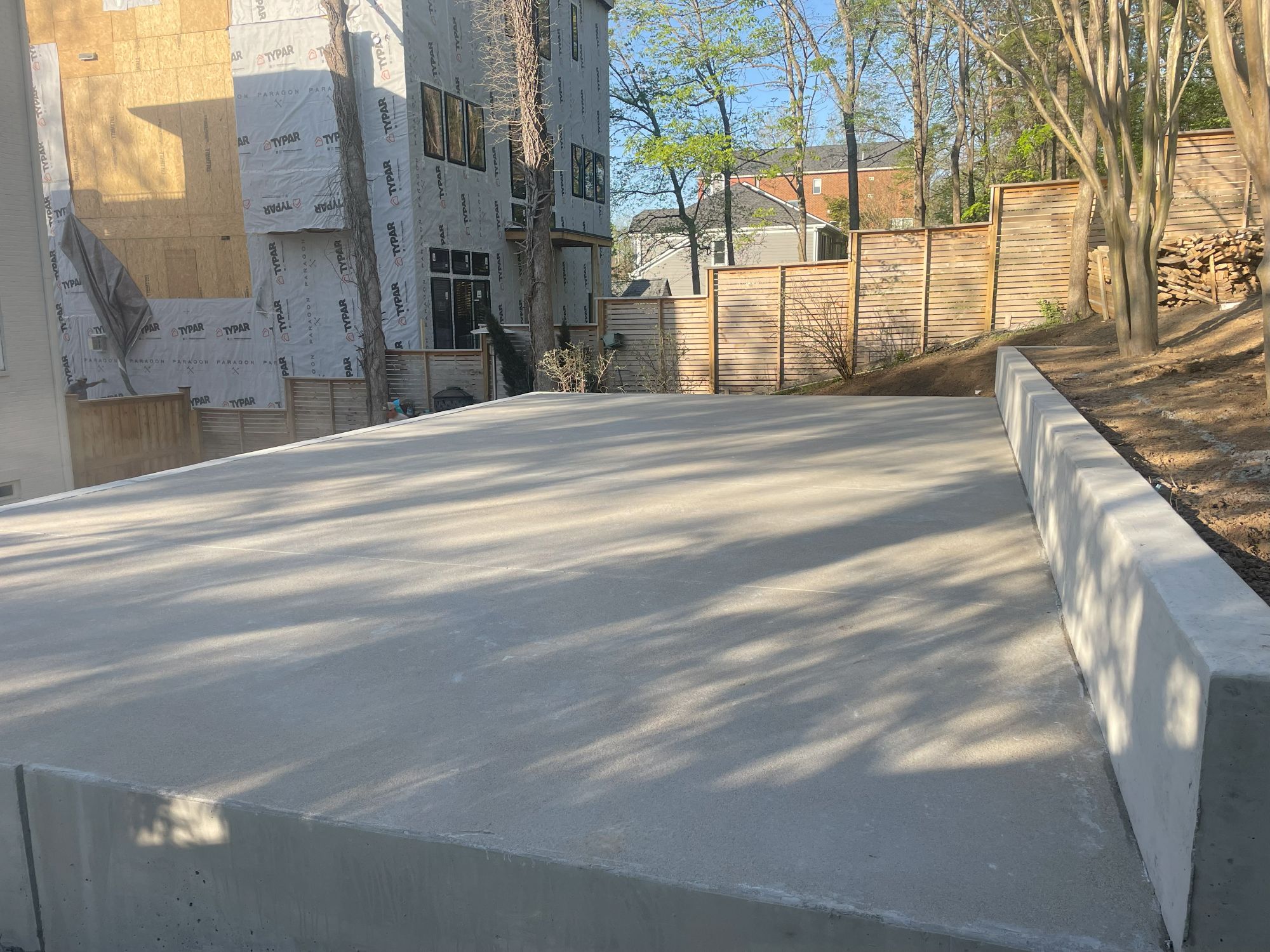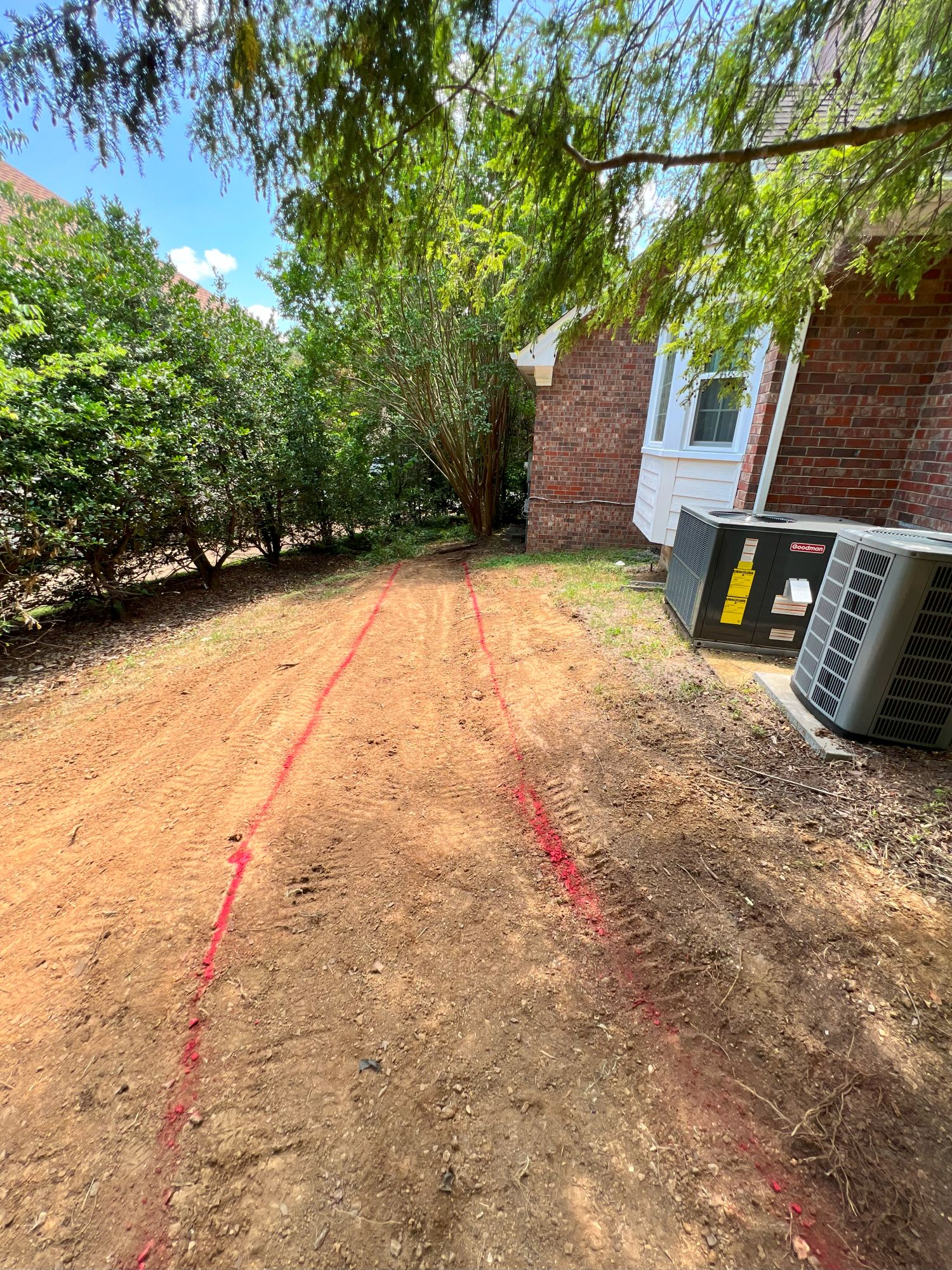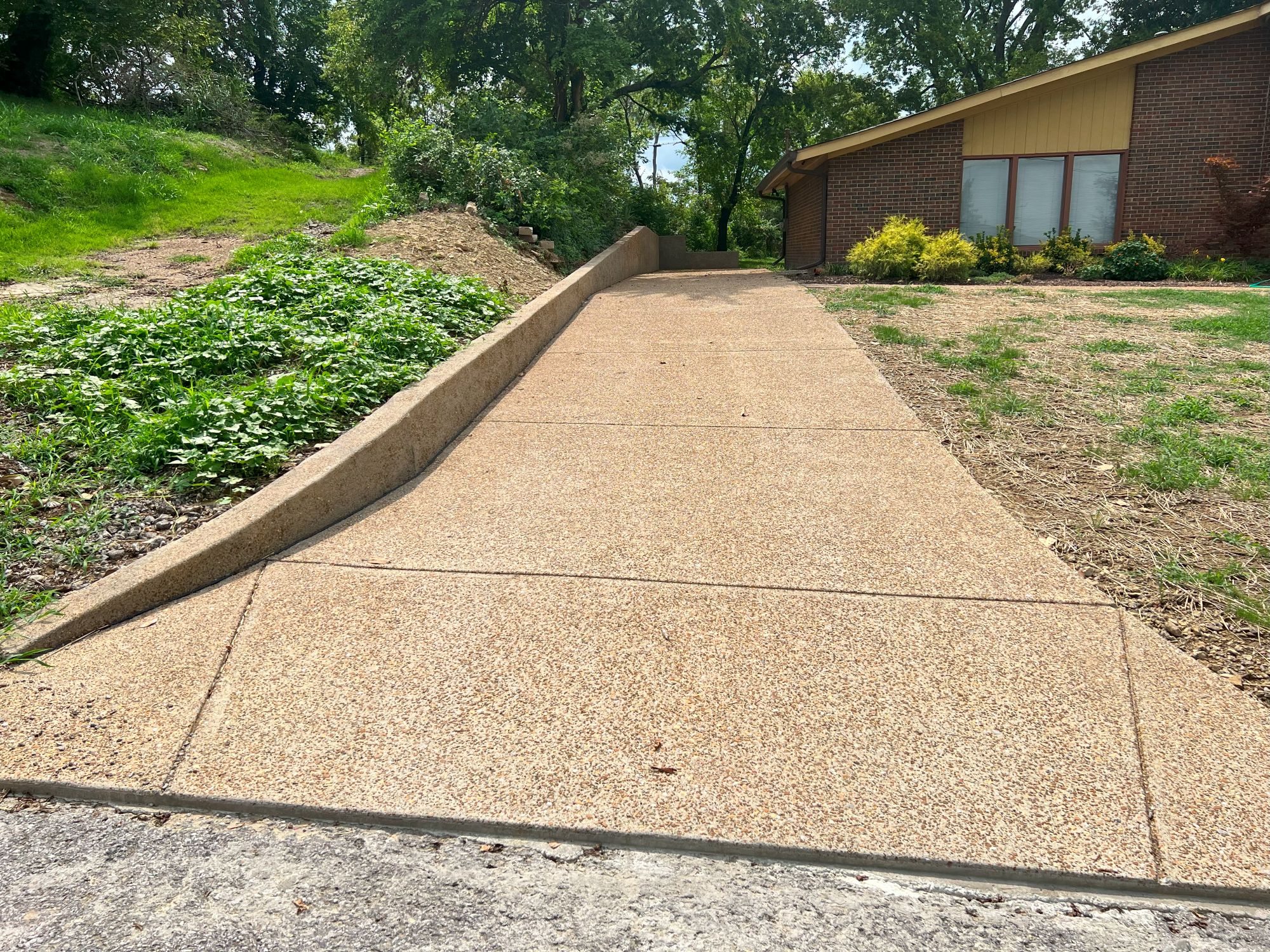Living on a steep slope can present unique challenges and opportunities when it comes to landscaping. The natural topography may be picturesque, but it can also make it difficult to create functional outdoor spaces. It can lead to problems with soil erosion and water drainage. All of these issues affect the usability of your property and the value of your home. Uneven ground can also turn into a problematic money pit as time goes on. One effective technique used by Greenway of Nashville to address these challenges is landscape grading.
What Is Grading in Landscaping?
Landscape grading refers to the process of shaping the land’s surface to achieve the desired slopes, contours, and drainage patterns. It involves strategically removing or adding soil to create level and usable terrain. Grading is a fundamental step in landscape design and construction, as it sets the foundation for various landscaping elements, such as patios, walkways, gardens, and retaining walls. Typically, landscape grading is done by professionals, since moving a large volume of soil from one area to another, packing it, and repairing the grass involves extensive equipment, time, and experience in order to have a great outcome.
Grading can turn a steep slope into a gentle incline or a completely flat surface. A steep slope causes soil to erode, as it’s easier for it to move away from the top of the angle with gravity, especially after rain. By reducing how severe the angle is, this loss of ground can be slowed or stopped. When near the foundation of a home or other structure, it’s critical that the soil stay put; otherwise, the foundation can become unstable, leading to damage and expensive repairs. A gentle slope can be left if it is beneficial to promote mild drainage of water away from a location so that it doesn’t pool there, which can also lead to unstable ground. Land that is very uneven may also lend itself to puddles, and leveling the ground through grading can improve drainage in that area, especially when combined with projects such as retaining walls.
“Work with skilled Nashville hardscaping and outdoor construction professionals who understand your vision and respect your schedule. Contact us for a free quote!”
How Do You Landscape a Steep Slope?
Undertaking a land grading project should not be done without thorough planning. Before initiating any grading work, conduct a thorough survey of the site. This helps identify the existing topography, soil conditions, and potential drainage issues. A professional grading contractor can provide precise measurements that will guide the grading process. They will be able to accurately estimate the best approach to creating a property that is stable and draining properly. As the saying goes, measure twice and cut once—or dig once, in this case.
Once the survey is complete, the next step is to establish the desired grade for the landscape. This involves considering factors such as water flow, erosion control, accessibility, and the intended use of the space. A well-planned grading design ensures that an area needed for a patio, shed, or other installation is flat. Locations needing proper drainage should have a slope to guide water away from important buildings. Grading is reported in percentages, with a slope of about 5% being ideal. This means that for every 10 feet, the height of the ground changes around six inches. If you’re familiar with treadmills, it is the same way the incline on the treadmill is calculated—selecting an incline of 5.0 is usually a 5% grade.
The first step of the actual grading process is excavation. This involves removing excess soil or rock from the site, while earthwork involves adding or reshaping soil to achieve the desired contours. On a steep slope, this may be an intensive and lengthy process, requiring the use of heavy machinery to create terraces or level areas. Soil is cut from high areas and used to fill in low areas, creating a more level surface. Part of the project may include techniques to bolster the grading, such as building retaining walls to stabilize the soil and create usable space. Since the retaining wall helps keep the earth in place, it’s a great way to prevent the grading landscaping from failing long-term. The project may also benefit from the installation of drainage systems, such as French drains or swales, to manage water runoff effectively. When multiple projects are needed, working with a landscape contractor allows you to have a comprehensive plan of execution that will prevent expensive missteps. The team at Greenway of Nashville are experienced professionals who can handle the complexities of grading on steep terrain safely and simultaneously take care of accessory projects to enhance results.
Why Is Grading a Steep Slope Important?
Steep slopes are more prone to erosion due to the rapid flow of water. Grading helps control erosion by redirecting water flow, minimizing soil displacement, and stabilizing the landscape. Properly graded slopes with well-planned drainage systems can significantly reduce erosion risk and protect the integrity of the land. There is also the risk of safety hazards, especially when it comes to navigating the landscape. Grading the land allows for the creation of level terraces or steps when flattening the land is not possible, making it easier and safer to move around. It enhances accessibility, ensuring that outdoor spaces are usable and enjoyable for all residents and visitors. By grading a steep slope, it is transformed into functional outdoor areas that were previously unusable. Terraces can be used for seating, gardens, or recreational activities, allowing you to maximize your outdoor living space.
Grading provides a stable foundation for constructing amenities such as decks, patios, or swimming pools. Being able to build on a flat area that drains properly makes for successful projects in the long term—no worrying about shifting or damage due to erosion and drainage problems. Grading also enables you to shape the land to complement your overall landscape design. The creation of visually appealing contours, focal points, and garden beds enhances the beauty of your property. With careful planning and design, a graded slope can become a stunning feature in your landscape, adding depth and character to your outdoor environment.
Grading a steep slope requires specialized knowledge and experience that Greenway has in abundance, with nearly two decades of experience performing landscape grading near Nashville. Consulting with a grading contractor who is familiar with the complexities of grading on sloped terrain is the best way to ensure your investment doesn’t go to waste. Your specific site conditions are assessed, and you are delivered a grading plan that addresses erosion control, safety, and your aesthetic goals. The best part is that we do all the dirty work, and you don’t have to spend your days on YouTube learning how to do it on your own. Embrace the possibilities that grading offers, and unlock the full potential of your steep slope landscape.
Protect your home and property: submit a form on our website or call us at (615)-238-4574 to schedule your free consultation.
Read more content related to:

